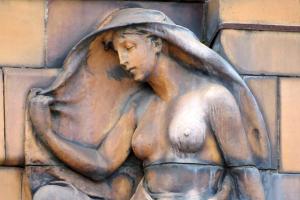
Allegorical statues of Night tend to be female, and in her most recognisable form, Night is a girl drawing a mantle over her head or face, the mantle of darkness, as it were. The figure above is of this sort. We notice that she has her eyes closed, in preparation for sleep. The sculptor Raphael Monti made a sculpture of this type, but flying, arms upheld, pulling her mantle across the sky. The picture below is in a different vein; again a female figure, but this time she is nude, and carries not her veil but a lamp, to light her way into the darkness.
Night as a nude figure with lamp. 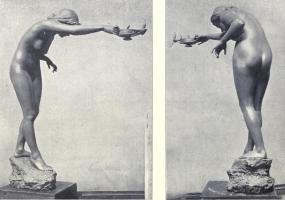
Another option is a female figure, or an angel, bringing sleep to others. Below left is a roundel with sculpture by J. G. Lough, called Nightís Swift Dragons. It depicts a girlish figure, lightly draped, and seated on a two-headed dragon, with a sleeping infant cradled against her breast; the figure of the cherub is guiding the dragon-heads. It is rather similar to, and may be based on, the slightly earlier roundel below right, by Bertel Thorwaldsen, called simply Night, with a flying angel carrying two sleeping children.
Night as an angel, carving by Lough, Thorwaldsen. 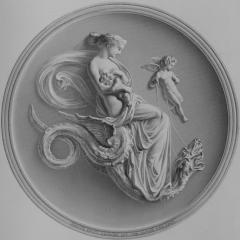
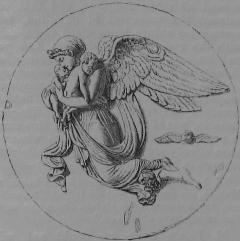
In the 1930s figure below, by William McMillan, a figure of Night is shown as a simple nude, with small figures at the base in slumber or embracing: this is a rather sensuous interpretation of the concept of Night, and it would seem unlikely that the previous generation, in Victorian or Edwardian times, would have produced such a sculpture.
Night does not have to be a girl: below left is a figure commonly called Night rather than Astronomy, showing a male figure reclining, telescope and globe and stars behind. I am really not sure about this one: Astronomy seems so much more reasonable. Our only reasons to take him as personifying Night would that he is reclining, as if for slumber, or that simply Astronomy is by definition a pursuit of the night. Below right is a cherubic figure, who is pulling over himself a long train of fabric as a veil of darkness. The leaves behind him are Acanthus, but the one by the cherubís head is curled into a flower shape suggestive of a poppy, symbol of sleep.
Finally, three examples where the figure is reduced to a bust, each rather different. Alfred Druryís bust, The Spirit of Night, shown below left, is an ideal portrait head of a sleeping girl. Frank Taubmanís fuller bust is a more overtly Symbolist sculpture, of a Valkyrie-like female, stern of face and sporting long feathers in her hair, who seems more in the spirit of a Creature of the Night rather than a bringer of darkness. And Richard Garbeís mask, also called Night, is perhaps of similar intent. However, it is notable that in each case, these busts are identified mainly by their names, and it would be hard indeed to be sure of an interpretation of them as representing Night without the title being given to us.
Night sculpture in the form of a bust. 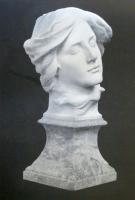
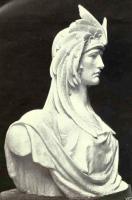
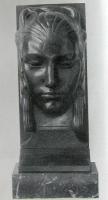
Back to Allegorical sculpture - M // Onward to Allegorical sculpture - O // Full Alphabet of Allegorical sculpture
Sculpture in London // Sculpture in England // Sculptors
Visits to this page from 11 Dec 2017: 4,012